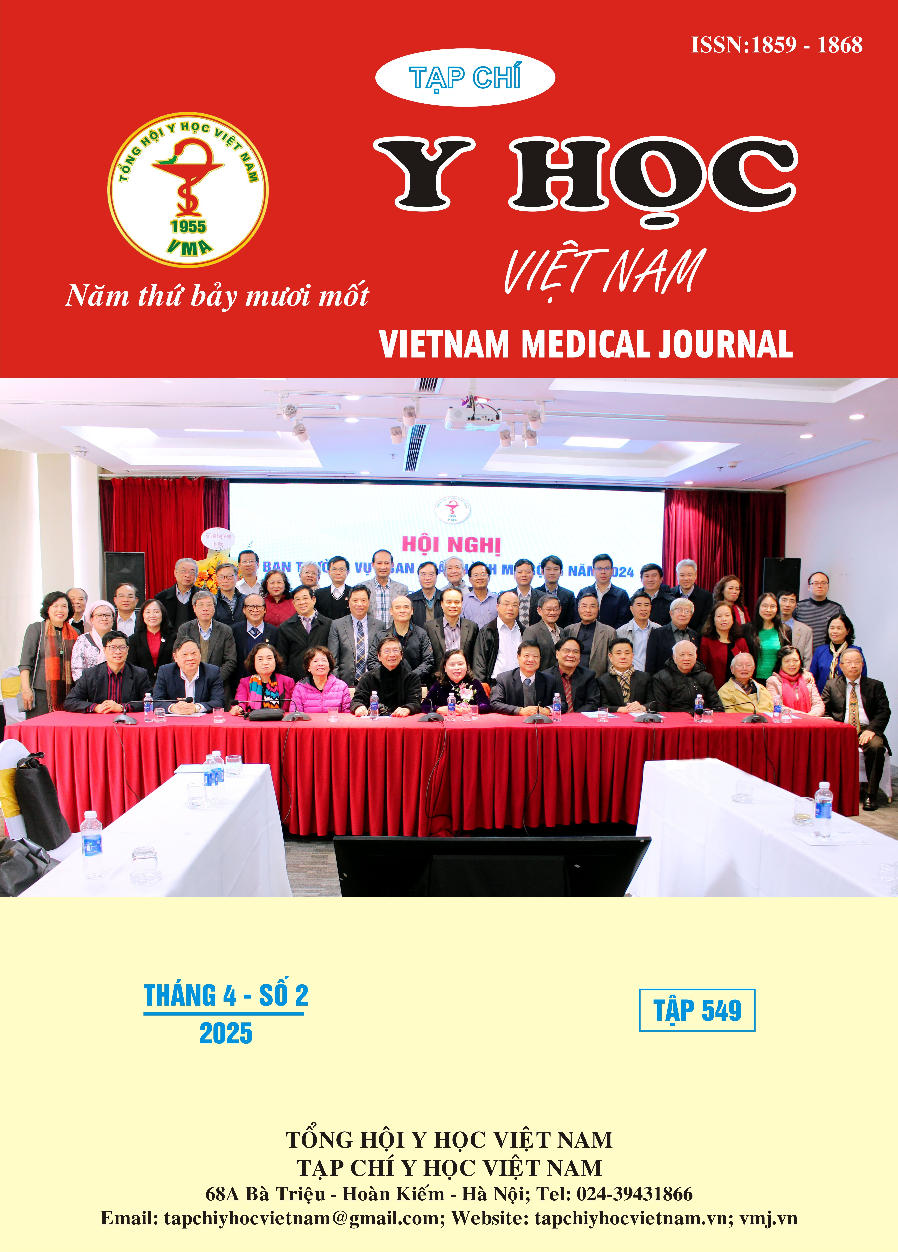CHARACTERISTICS OF CLINICAL MANIFESTATION AND BRONCHIAL LAVAGE FLUID IN PATIENTS WITH POST-TUBERCULOSIS BRONCHIECTASIS
Main Article Content
Abstract
Background: Bronchiectasis is relatively common in the Asian population, especially post-tuberculosis bronchiectasis (PTBE). PTBE is associated with more severe disease progression and faster decline in lung function compared to bronchiectasis caused by other causes. In Vietnam, there is limited data on PTBE. The research question is whether PTBE in Vietnam has any specific characteristics and whether there are differences between PTBE and bronchiectasis caused by other causes. Objectives: This study aims to describe the clinical characteristics and bronchial lavage fluid findings of adult patients with PTBE in Vietnam; to compare the characteristics of PTBE patients with those of bronchiectasis patients due to other causes. Methods: A cross-sectional descriptive study of adult patients with stable bronchiectasis who underwent bronchoscopy at Cho Ray Hospital and the University Medical Center Ho Chi Minh City from May 2022 to January 2024. Results: Among 139 bronchiectasis patients, 46 cases (33.1%) met the diagnostic criteria for PTBE. The patients in our study had an average age of 60 ± 13, with female predominance (59%). Coughing and sputum production were the most common symptoms (71.9%). Pseudomonas aeruginosa was the most frequent bacteria isolated in both groups. Features of PTBE are more common in males (56.5%), a low BMI (20.3 ± 2.8 kg/m2), hemoptysis (41.7%) and signs of bronchiectasis on imaging predominantly in the upper lobes of the lungs (87%). There was no significant difference in disease severity (based on bronchiectasis severity index, FACED, and Reiff) between PTBE and bronchiectasis due to other causes. Conclusion: PTBE is a common cause of bronchiectasis in countries with high tuberculosis prevalence as Vietnam. It has quite distinctive clinical features, so classifying PTBE as a separate clinical phenotype of bronchiectasis could improve the quality of management and prognosis.
Article Details
Keywords
bronchial lavage fluid, bronchiectasis, pulmonary tuberculosis
References
2. Allwood BW, Byrne A, Meghji J, et al. Post-Tuberculosis Lung Disease: Clinical Review of an Under-Recognised Global Challenge. Respiration. 2021;100(8):751-763.
3. Bajpai J, Kant S, Verma A, et al. Clinical, Radiological, and Lung Function Characteristics of Post-tuberculosis Bronchiectasis: An Experience From a Tertiary Care Center in India. Cureus. 2023;15(2):e34747.
4. Chalmers JD, Elborn S, Greene CM. Basic, translational and clinical aspects of bronchiectasis in adults. Eur Respir Rev. 2023;32(168):230015.
5. Choi H, Lee H, Ra SW, et al. Clinical Characteristics of Patients with Post-Tuberculosis Bronchiectasis: Findings from the KMBARC Registry. J Clin Med. 2021;10(19):4542.
6. Choi H, Xu JF, Chotirmall SH, Chalmers JD, et al. Bronchiectasis in Asia: a review of current status and challenges. Eur Respir Rev. 2024;33(173):240096.
7. Cohen R, Shteinberg M. Diagnosis and Evaluation of Bronchiectasis. Clin Chest Med. 2022;43(1):7-22.
8. Fong I, Low TB, Yii A. Characterisation of the post-tuberculous phenotype of bronchiectasis: A real-world observational study. Chron Respir Dis. 2022;19:14799731221098714
9. Hill AT, Sullivan AL, Chalmers JD, et al. British Thoracic Society Guideline for bronchiectasis in adults. Thorax. 2019;74(Suppl 1):1-69.
10. Minov J, Karadzinska-Bislimovska J, Vasilevska K, et al. Assessment of the Non-Cystic Fibrosis Bronchiectasis Severity: The FACED Score vs the Bronchiectasis Severity Index. Open Respir Med J. 2015;9:46-51.


